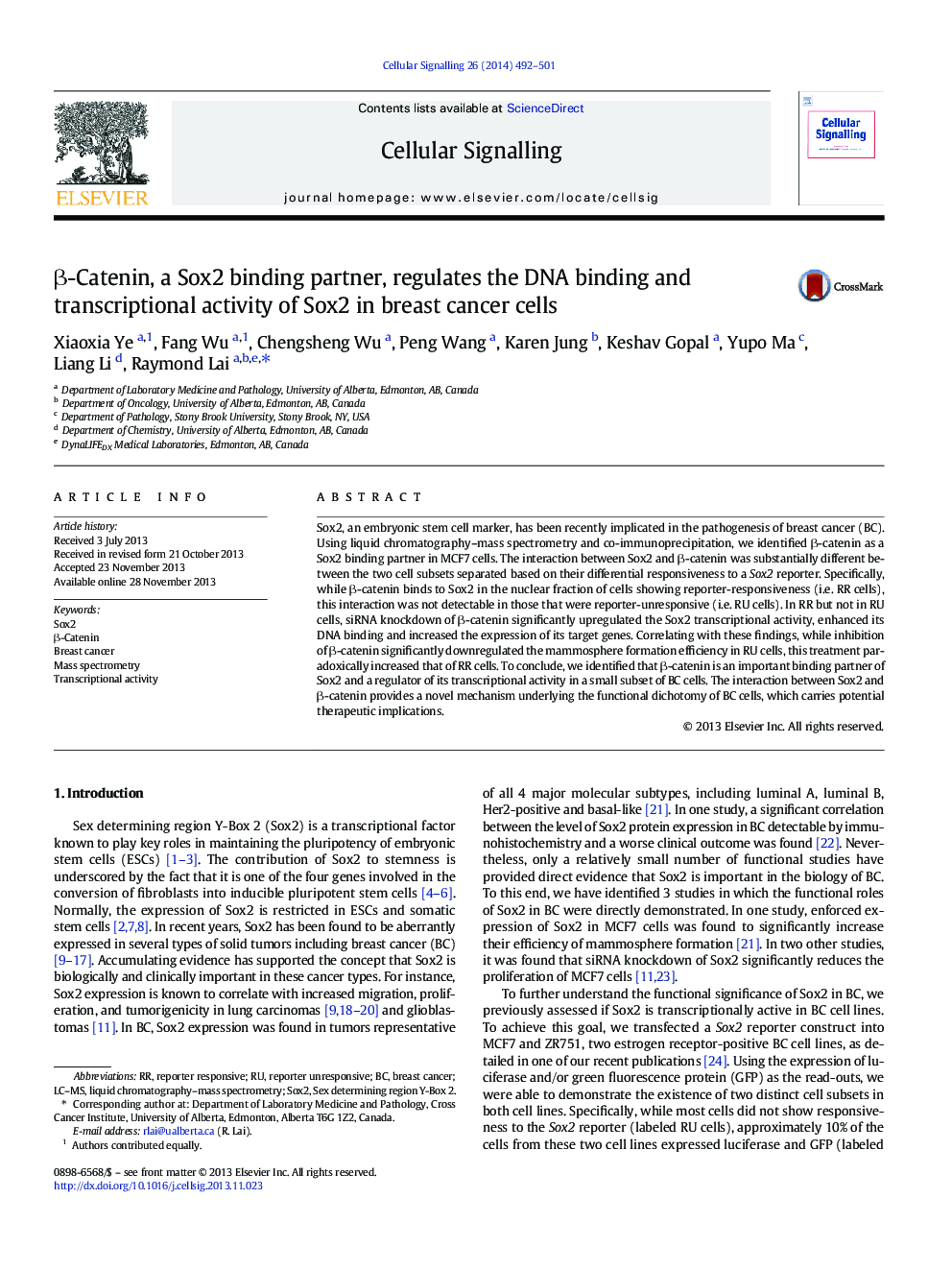| Article ID | Journal | Published Year | Pages | File Type |
|---|---|---|---|---|
| 10815277 | Cellular Signalling | 2014 | 10 Pages |
Abstract
Sox2, an embryonic stem cell marker, has been recently implicated in the pathogenesis of breast cancer (BC). Using liquid chromatography-mass spectrometry and co-immunoprecipitation, we identified β-catenin as a Sox2 binding partner in MCF7 cells. The interaction between Sox2 and β-catenin was substantially different between the two cell subsets separated based on their differential responsiveness to a Sox2 reporter. Specifically, while β-catenin binds to Sox2 in the nuclear fraction of cells showing reporter-responsiveness (i.e. RR cells), this interaction was not detectable in those that were reporter-unresponsive (i.e. RU cells). In RR but not in RU cells, siRNA knockdown of β-catenin significantly upregulated the Sox2 transcriptional activity, enhanced its DNA binding and increased the expression of its target genes. Correlating with these findings, while inhibition of β-catenin significantly downregulated the mammosphere formation efficiency in RU cells, this treatment paradoxically increased that of RR cells. To conclude, we identified that β-catenin is an important binding partner of Sox2 and a regulator of its transcriptional activity in a small subset of BC cells. The interaction between Sox2 and β-catenin provides a novel mechanism underlying the functional dichotomy of BC cells, which carries potential therapeutic implications.
Related Topics
Life Sciences
Biochemistry, Genetics and Molecular Biology
Biochemistry
Authors
Xiaoxia Ye, Fang Wu, Chengsheng Wu, Peng Wang, Karen Jung, Keshav Gopal, Yupo Ma, Liang Li, Raymond Lai,
